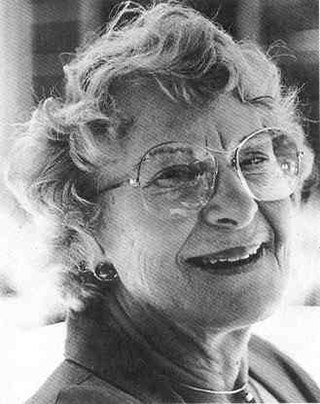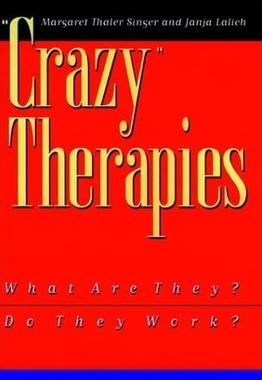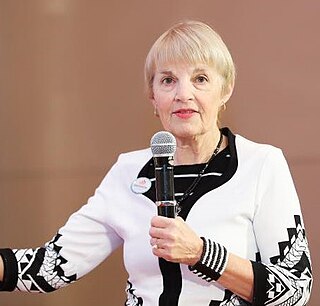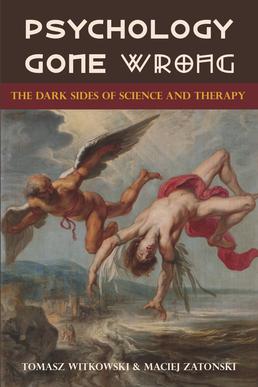Hypnotherapy, also known as hypnotic medicine, is the use of hypnosis in psychotherapy. The efficacy of hypnotherapy is not well supported by scientific evidence, and, due to the lack of evidence indicating any level of efficacy, it is regarded as a type of alternative medicine by reputable medical organisations such as the National Health Service.
Neuro-linguistic programming (NLP) is a pseudoscientific approach to communication, personal development and psychotherapy, that first appeared in Richard Bandler and John Grinder's 1975 book The Structure of Magic I. NLP asserts that there is a connection between neurological processes, language and acquired behavioral patterns, and that these can be changed to achieve specific goals in life. According to Bandler and Grinder, NLP can treat problems such as phobias, depression, tic disorders, psychosomatic illnesses, near-sightedness, allergy, the common cold, and learning disorders, often in a single session. They also claim that NLP can "model" the skills of exceptional people, allowing anyone to acquire them.

Virginia Satir was an American author, clinical social worker and psychotherapist, recognized for her approach to family therapy. Her pioneering work in the field of family reconstruction therapy honored her with the title "Mother of Family Therapy". Her most well-known books are Conjoint Family Therapy, 1964, Peoplemaking, 1972, and The New Peoplemaking, 1988.

John Thomas Grinder Jr. is an American linguist, writer, management consultant, trainer and speaker. Grinder is credited with co-creating the pseudoscience known as neuro-linguistic programming (NLP) with Richard Bandler. He is co-director of Quantum Leap Inc., a management consulting firm founded by his partner Carmen Bostic St. Clair in 1987. Grinder and Bostic St. Clair also run workshops and seminars on NLP internationally.
Richard Wayne Bandler is an American writer, consultant, and public speaker in the field of self-help. With John Grinder, he founded the neuro-linguistic programming (NLP) approach to psychotherapy in the 1970s, which is considered pseudoscience.

Emotional Freedom Techniques (EFT) is a technique that stimulates acupressure points by pressuring, tapping or rubbing while focusing on situations that represent personal fear or trauma. EFT draws on various theories of alternative medicine – including acupuncture, neuro-linguistic programming, energy medicine, and Thought Field Therapy (TFT). EFT also combines elements of exposure therapy, cognitive behavioral therapy and somatic stimulation. It is best known through Gary Craig's EFT Handbook, published in the late 1990s, and related books and workshops by a variety of teachers. EFT and similar techniques are often discussed under the umbrella term "energy psychology."
Eye movement desensitization and reprocessing (EMDR) is a form of psychotherapy that is controversial within the psychological community. It was devised by Francine Shapiro in 1987 and originally designed to alleviate the distress associated with traumatic memories such as post-traumatic stress disorder (PTSD).
Representational systems is a postulated model from neuro-linguistic programming, a collection of models and methods regarding how the human mind processes and stores information. The central idea of this model is that experience is represented in the mind in sensorial terms, i.e. in terms of the putative five senses, qualia.
Steve Andreas was an American psychotherapist and author specializing in Neuro-linguistic programming.
Francine Shapiro was an American psychologist and educator who originated and developed eye movement desensitization and reprocessing (EMDR), a form of psychotherapy for resolving the symptoms of traumatic and other disturbing life experiences.
Covert hypnosis is an attempt to communicate with another person's unconscious mind without informing the subject that they will be hypnotized. It is also known as conversational hypnosis or sleight of mouth.. It is a term largely used by proponents of neuro-linguistic programming (NLP), a pseudoscientific approach to communication and interaction.

"Crazy" Therapies: What Are They? Do They Work? is a book by the psychologist Margaret Singer and the sociologist Janja Lalich. It was published by Jossey-Bass in 1996.
The methods of neuro-linguistic programming are the specific techniques used to perform and teach neuro-linguistic programming, which teaches that people are only able to directly perceive a small part of the world using their conscious awareness, and that this view of the world is filtered by experience, beliefs, values, assumptions, and biological sensory systems. NLP argues that people act and feel based on their perception of the world and how they feel about that world they subjectively experience.
Connirae Andreas is an American author and psychotherapist who is known for her work within the field of Neuro-linguistic programming (NLP).
The Association for Neuro-Linguistic Programming (ANLP) is a UK organisation founded in 1985 by Frank Kevlin to promote neuro-linguistic programming (NLP). Since 2005, it has been led by Karen Moxom.
The Structure of Magic is a two-volume book series by John Grinder and Richard Bandler, co-founders of neuro-linguistic programming (NLP), which is considered a pseudoscience. The series explores how humans construct internal models of the world through language and nonverbal communication. They introduce a process of modeling, through which the authors sought to identify the replicable patterns of thought, language, and behavior modeled from "outstanding psychotherapists", namely Fritz Perls and Virginia Satir, a family systems therapist. The foreword to the first volume was written by Virginia Satir and the introduction by Gregory Bateson.

Tomasz Witkowski is a Polish psychologist, skeptic and science writer. He is known for his unconventional campaigns against pseudoscience. He specializes in debunking pseudoscience, particularly in the fields of psychology, psychotherapy, and diagnostics. Witkowski also engages in debates on pseudoscience-related topics, emphasizing scientific skepticism.

Marilyn W. Atkinson is the founder and President of Erickson Coaching International. She is a speaker, coach, Master coach trainer, Master NLP trainer, writer, designer of coach training program The Art & Science of Coaching Atkinson was a student of Milton Erickson, and it was his mentorship and guidance that inspired her to name the company after him.

Psychology Gone Wrong: The Dark Sides of Science and Therapy is a 2015 book written by Tomasz Witkowski and Maciej Zatonski.







